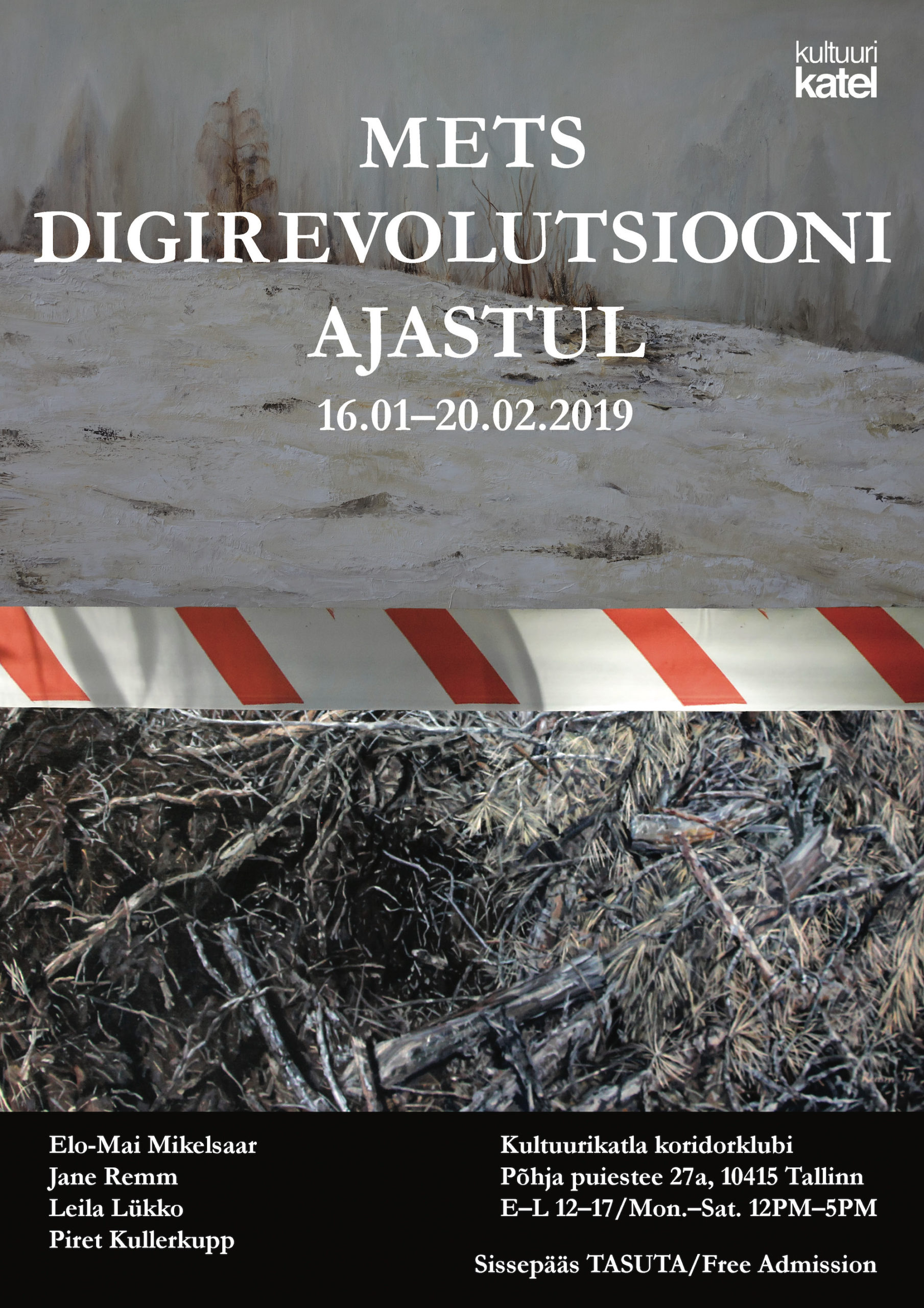
Free entry | Open Monday-Saturday 12:00-17:00
Contemporary art has to a great extent abandoned the classical art medium. Landscape painting seems too ordinary, aesthetically beautiful, sometimes idyllic. This particular exhibition seeks to open up the historical content and importance of forest painting and to find connections with the topic today.
Forest painting forms part of the genre of landscape painting. It first emerged in Russia and other parts of Europe during the 19th century. One of the factors which shaped 19th-century art was the Industrial Revolution, which had begun in England in the late 18th century. The other aspect which is likely to have influenced artists was the opening of public gardens and parks, which had previously belonged to the aristocracy. These gardens and parks were no longer as strictly controlled by the human hand and could be seen as parts of forests. Sometimes the line between park and forest is unclear.
It is worth mentioning that at the time of the Industrial Revolution the absolute monarchy fell. For contemporaries the forest may have symbolised liberation from the old structure of society, but it could also have represented the idea of seeing divinity in the forest.
In Estonian cultural space, the forest plays an important role. It is associated with beliefs and rituals, such as sacred trees. It is also an important economic source. For some people, the forest is a place where they can find peace; to others it is a place of mystery and danger.
In recent years, constant discussions about forests have taken place due to the construction boom, growth in the economy, logging and habitat destruction. At the same time, the digital revolution is progressing, which is inevitably shaping artists’ understanding of the world. There are different opinions about technology: some believe in its power to save, while others see it as a destroyer of nature. It is the artist who deciphers the world around them and talks through visual images.
Paintings of forests exhibited in an industrial interior evoke a dissonance and pose the question: how do you relate to a forest that is so close and so tangible, but at the same time so alien and at such a distance?
Contributions: Camilla Goldberg, Kersti Kant, Olav Maran, Heiko Pikner
